CALL US! 1-415-851-9190
LetsGo@Lucky-Tuk-Tuk.com
Tuk tuks—also known as auto rickshaws—are more than just a fun, three-wheeled way to get around. These iconic vehicles have taken on countless variations across the globe, adapted to suit local cultures, road conditions, and even fuel preferences. From the buzzing “bajaji” in Tanzania to the “cocotaxi” in Cuba, tuk tuks have become as diverse as the destinations they roam.
Let’s explore some of the most unique tuk tuk designs and nicknames worldwide! And if you’re looking for a one-of-a-kind ride in San Francisco, a Lucky Tuk Tuk private tour is the perfect way to explore the city in style.
Rickshaws, known as “Raksha” in Sudan, are the most common means of transportation followed by the bus in the capital Khartoum.
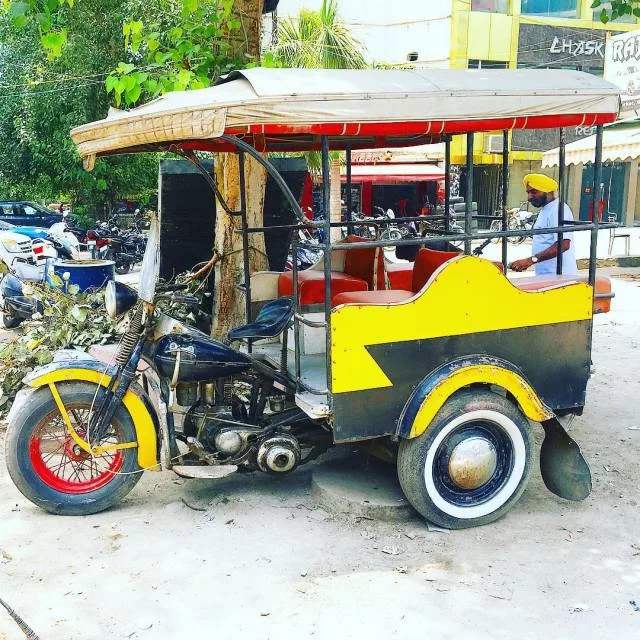
Tanzanians call their tuk tuks “Bajaji”, a term borrowed from the Indian Bajaj brand, which manufactures many of the country’s rickshaws.
In parts of Egypt, tuk tuks go by the name “toktok”, a local adaptation of their engine’s sound.
![Tok Tok in Egypt Wael.kenawey [CC BY-SA 4.0 (https://creativecommons.org/licenses/by-sa/4.0)]](https://lucky-tuk-tuk.com/wp-content/uploads/Toktok-egypt.webp)
In Lagos and other Nigerian cities, tuk tuks are known as “Keke”, short for “Keke Napep,” a term introduced when the government pushed for their use as an alternative to motorcycles.
India’s tuk tuks come in many forms. Traditionally, they had front-mounted engines, but newer models feature rear engines. Delhi also had a legendary outlawed version called the “phat-phati,” powered by Harley-Davidson engines left behind by British troops. These beasts roared through the streets, leaving an unforgettable mark on local history.
As of 2018 India has about 1.5 million battery-powered, three-wheeled rickshaws on its roads. Some 11,000 new ones hit the streets each month.
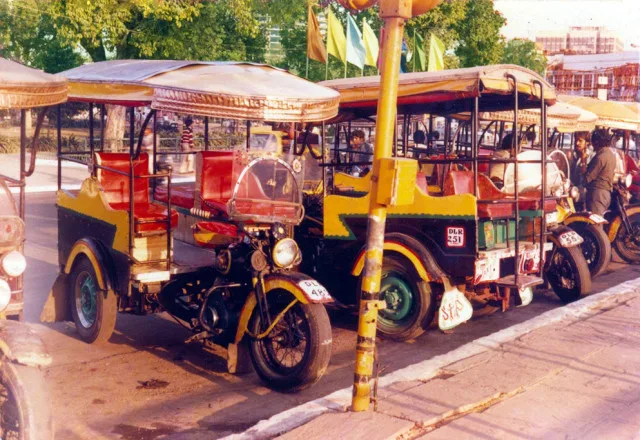
In Madagascar, you’ll hear tuk tuks called “bajaji” in the north and “tik-tik” in the east.
Bangladesh’s auto rickshaws were once called “baby taxis”, but today, they’re more commonly known as “CNGs” due to their use of compressed natural gas.
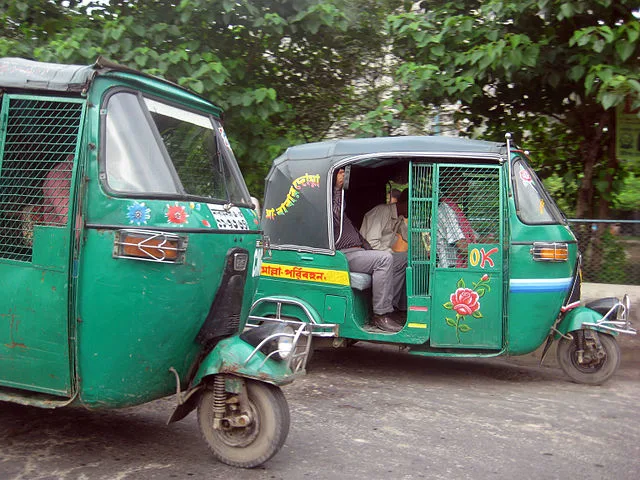
Cambodian tuk tuks differ from the norm. These “moto-remork” rides feature a motorcycle in front towing a two-wheeled passenger cart.
![Cambodia tuk tuk 4 wheels Cambodia tuk tuk with motorcycle Photo by: ajai [CC BY 2.0 (https://creativecommons.org/licenses/by/2.0)]](https://lucky-tuk-tuk.com/wp-content/uploads/Cambodia_tuk_tuk-4-wheels.webp)
Guatemala sticks to the classic “tuk-tuk” name for its auto rickshaws.
Tuk tuks, also known as auto rickshaws, are an iconic mode of transport across Asia, Africa, and parts of Latin America. In cities like Bangkok, Mumbai, and Jakarta, these three-wheeled vehicles are a part of everyday life, weaving through traffic and offering an affordable, quick way to get around. But among all the tuk tuk variations, one of the most legendary and unforgettable was Delhi’s “Phatphati”—a unique and unconventional rickshaw that roared through the streets of India’s capital for decades.
Legend has it that when the British left India in 1947, they abandoned several Harley-Davidson motorcycles, possibly used by military police or dispatch riders. Enterprising locals saw an opportunity and transformed these powerful machines into passenger vehicles. By attaching a Willys Jeep gearbox and welding a custom-built passenger compartment onto the frame, they created a one-of-a-kind taxi service.
These modified Harley-powered rickshaws became known as “phatphatis” or “phatphats”, named after the deep, rhythmic, staccato sound of their engines—a distinctive “phat-phat-phat” that echoed through the streets of Delhi. Unlike modern tuk tuks, which use smaller engines, the Phatphati’s roaring motorcycle engine made it a true street beast—more of a hot rod than a rickshaw!
Taking a ride in one of these machines was a thrilling experience. The driver—straddled the vehicle like a motorcyclist, gripping the handlebars as if steering a heavy bike. The seating arrangement was unique:
Despite the rickety ride, riding a Phatphati was exhilarating, offering a combination of speed, raw power, and an unfiltered, open-air view of the bustling city.
The 1950s and 1960s were the golden era of the Phatphati. They became a common sight on Delhi’s roads, ferrying passengers across the city. Their powerful engines and fast acceleration made them far superior to conventional cycle rickshaws, which relied on human pedaling.
However, by the mid-1980s, the Indian government began phasing out Phatphatis due to concerns over:
By the early 1990s, most of the Phatphatis had disappeared from the streets, replaced by the smaller, quieter Bajaj auto rickshaws that dominate India’s roads today.
Though the Phatphati has vanished from modern Delhi, it remains an unforgettable piece of the city’s transport history. Stories of thrilling rides, daring drivers, and the unmistakable “phat-phat” sound continue to be passed down by those who were lucky enough to experience them.
Today, tuk tuks have evolved into electric and battery-powered variants, offering a more sustainable alternative to their gas-guzzling predecessors. But the spirit of the Phatphati lives on in every three-wheeled rickshaw zipping through city streets worldwide.
Would you have dared to ride one of these roaring Harley-powered rickshaws?
(Thanks to Hurry Up! for historical info.)
“Cocotaxi” is an auto rickshaw-type taxi vehicle in Cuba. The name comes from the word coco, which means coconut. The shell of the body is yellow and is typically round, giving it the appearance of a half-coconut.
![Coco Taxis in Havana Cuba Coco Taxis in Havana Cuba Photo by: Emmanuel Huybrechts from Laval, Canada [CC BY 2.0 (https://creativecommons.org/licenses/by/2.0)]](https://lucky-tuk-tuk.com/wp-content/uploads/Coco_Taxi_havana-cuba.webp)
Pakistan has both traditional auto rickshaws and motorcycle-based versions called “chand gari” (moon car) and “chingchi” (named after a Chinese manufacturer).
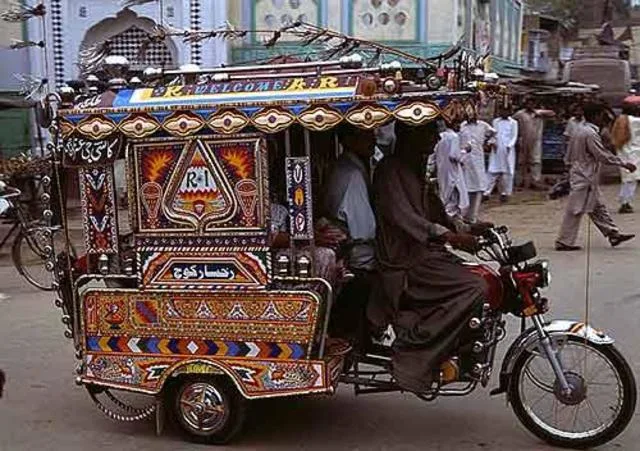
Thailand’s tuk tuks are legendary. The name itself mimics the sound of their small engines, much like the English term “putt-putt.”
![Tuk Tuk In Thailand Tuk Tuk In Thailand Photo by: Terence Ong [CC BY-SA 3.0 (http://creativecommons.org/licenses/by-sa/3.0/)]](https://lucky-tuk-tuk.com/wp-content/uploads/tuk_tuk-thailand.webp)
Italy’s tuk tuk equivalent, the “Piaggio Ape,” was designed by the same company behind the Vespa scooter. It’s widely known as the “Tukxi.”
![Blue Ape Calessino - Piaggio Ape Classic Blue Ape Calessino - Piaggio Ape Photo by: Fiver, der Hellseher [CC BY-SA 4.0 (https://creativecommons.org/licenses/by-sa/4.0)]](https://lucky-tuk-tuk.com/wp-content/uploads/Blue-Ape-Calessino-Piaggio-Ape.webp)
Tuk Tuks officially entered the UK market in 2004, bringing a taste of Southeast Asia to British streets.
El Salvador’s auto rickshaws are simply called “mototaxis” or just “motos.”
![Bajaj-mototaxi-in-El-Salvador Bajaj mototaxi in El Salvador Photo by: Mariordo (Mario Roberto Durán Ortiz) [CC BY-SA 3.0 (https://creativecommons.org/licenses/by-sa/3.0)]](https://lucky-tuk-tuk.com/wp-content/uploads/Bajaj-mototaxi-in-El-Salvador.webp)
China’s tuk tuks are known as “San Lun Che” (three-wheeler) and sometimes “Du Du Che”, which translates to “beep beep car.”
Auto rickshaws are called “Bajay’ or “Bajaj” Outside of Jakarta, the bentor-style auto rickshaw is ubiquitous, with the passenger cabin mounted as a sidecar.
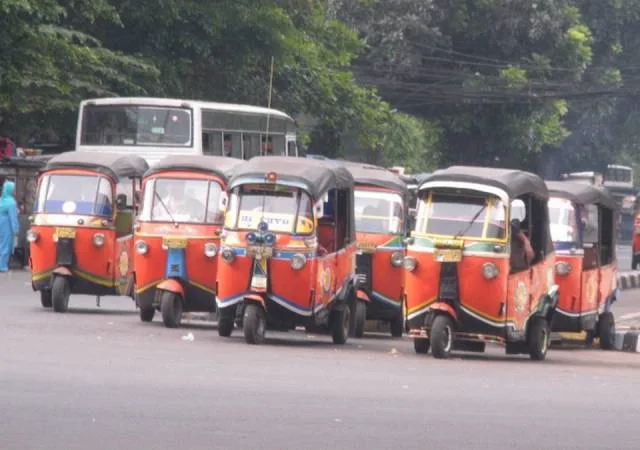
Referred to as “tricycles” – in Filipino traysikel and Cebuano traysikol. Usual design is a passenger or cargo sidecar fitted to a motorbike.
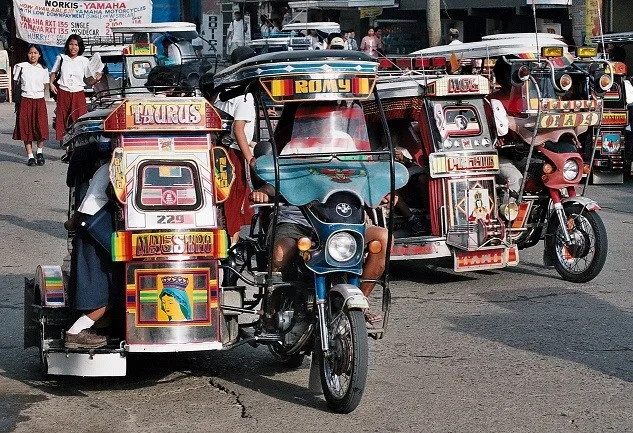
Sri Lanka refers to its tuk tuks as “three-wheelers,” “tuk-tuks,” or “trishaws.”
![tuk-tuk-taxi-sri-lanka Tuk Tuk Taxi in Sri Lanka photo by: calflier001 [CC BY-SA 2.0 (https://creativecommons.org/licenses/by-sa/2.0)]](https://lucky-tuk-tuk.com/wp-content/uploads/tuk-tuk-taxi-sri-lanka.webp)
From the electric phat-phati of India to Sudan’s rugged Raksha, tuk tuks are more than just a way to get around—they’re rolling symbols of culture and ingenuity. Each country has adapted these small but mighty vehicles to meet its own needs, creating a fascinating variety of designs and local names.
If you’re looking for a tuk tuk experience with a view, Lucky Tuk Tuk’s private San Francisco sightseeing tours offer a unique way to explore the city’s most iconic landmarks. From the Golden Gate Bridge to Fisherman’s Wharf, you’ll zip through SF in a fun and eco-friendly ride, complete with a personal guide to make your trip unforgettable.
Discover the city’s best spots with a private, small-group tour customized just for you.
🔹 2 or 3-hour private sightseeing tours
🔹 Custom stops & routes available
🔹 Perfect for families & groups
📅 Check availability & reserve your spot now!
Our goal is to provide 5-star service to our guests from around the world.
Got a question? Don’t hesitate to contact us. We’re passionate about planning the perfect Tuk Tuk tour for you.
